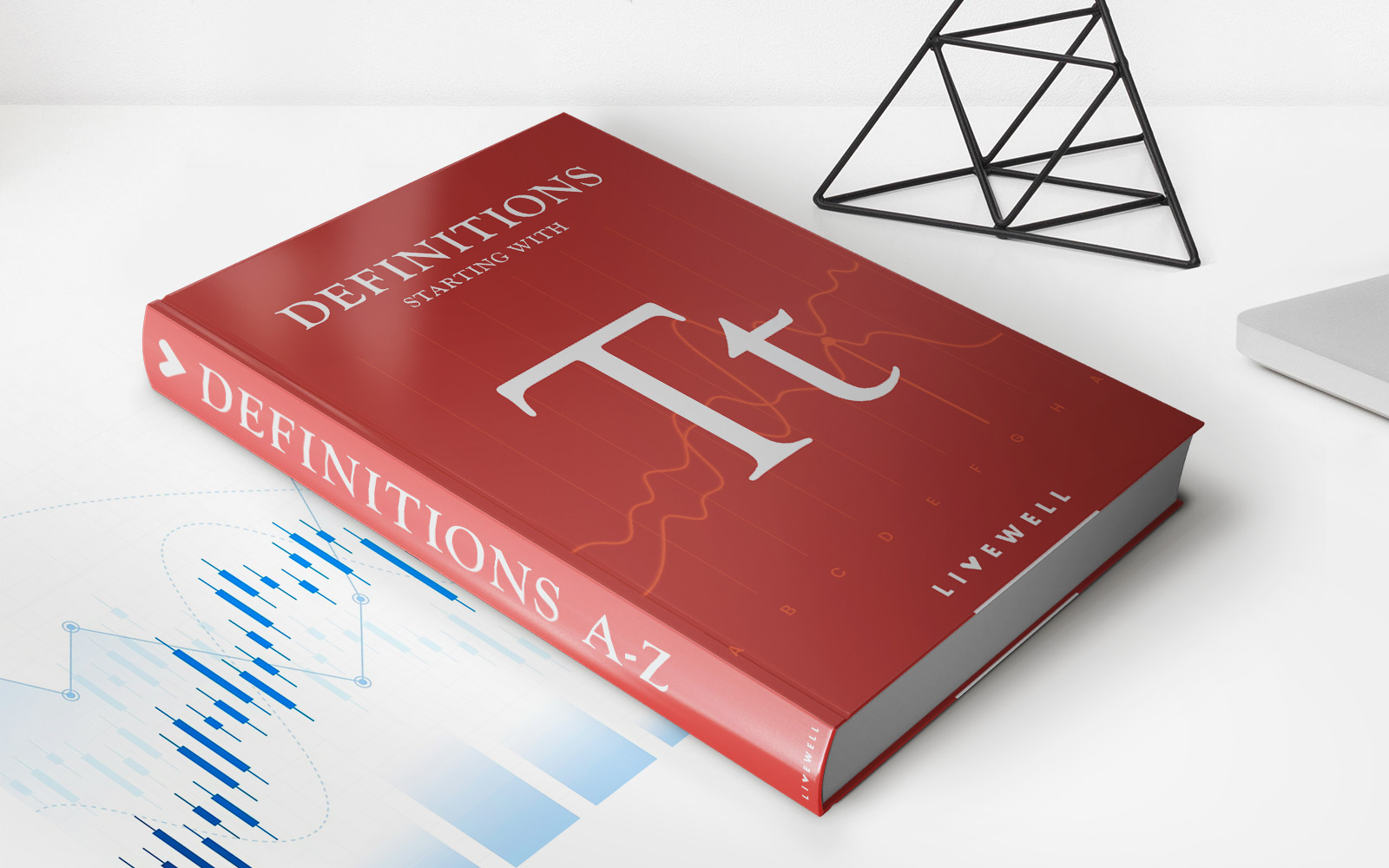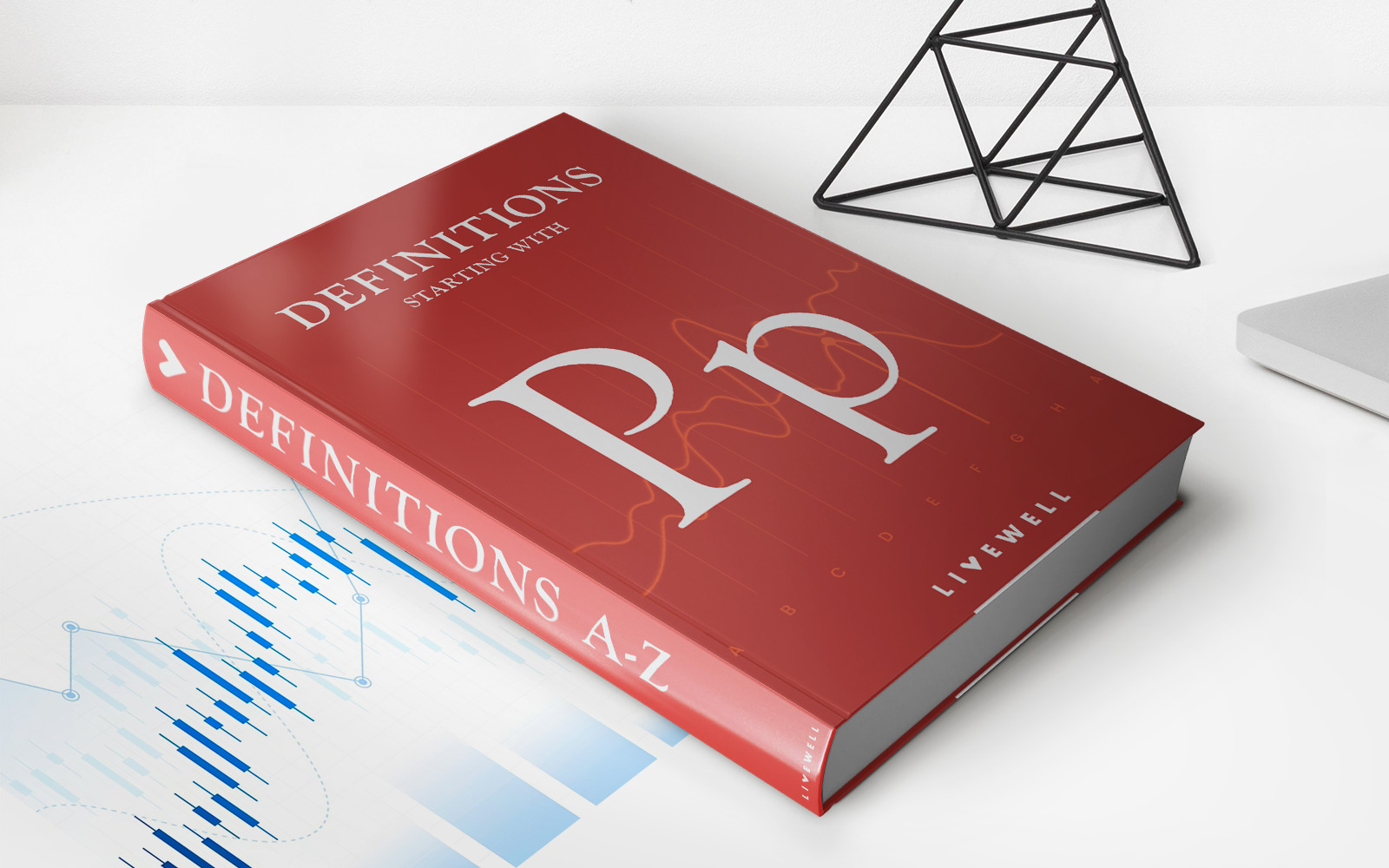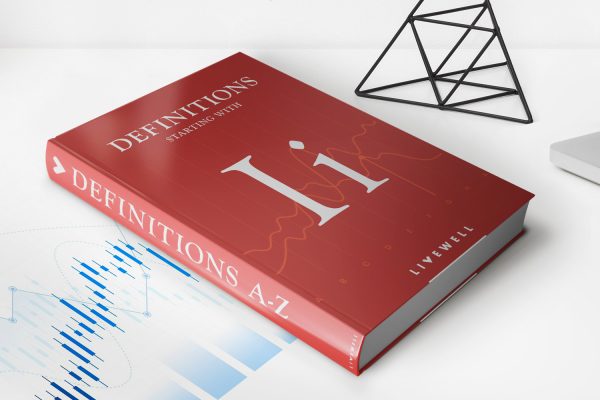

Finance
What Is MEC In Life Insurance?
Modified: December 29, 2023
Learn about MEC in life insurance, a crucial concept in finance that affects policy taxation. Understand its implications and make informed decisions.
(Many of the links in this article redirect to a specific reviewed product. Your purchase of these products through affiliate links helps to generate commission for LiveWell, at no extra cost. Learn more)
Table of Contents
- Introduction
- Understanding MEC (Modified Endowment Contract)
- Features and Benefits of MEC in Life Insurance
- How MEC Differs from Traditional Life Insurance Policies
- Tax Implications of MEC in Life Insurance
- Pros and Cons of Choosing MEC in Life Insurance
- Factors to Consider When Deciding on MEC in Life Insurance
- Conclusion
Introduction
Life insurance is an essential financial tool that provides protection and peace of mind for individuals and their loved ones. It offers a death benefit payout to beneficiaries in the event of the policyholder’s demise. However, traditional life insurance policies have limitations when it comes to their cash value accumulation and tax advantages. This is where Modified Endowment Contracts (MEC) come into play.
Understanding what MEC is and how it works is crucial for anyone looking to secure their financial future. In this article, we will delve into the concept of MEC in life insurance, its features and benefits, how it differs from traditional policies, the tax implications, and the factors to consider when deciding whether MEC is the right choice for you.
At its core, a MEC is a type of life insurance policy that has been funded with premiums exceeding certain limits set by the Internal Revenue Service (IRS). These policies must adhere to specific guidelines outlined by the IRS to maintain their beneficial tax treatment. While MECs still provide a death benefit like traditional policies, their primary focus is on accumulating cash value over time.
MEC policies typically have more significant cash value accumulation potential compared to traditional policies, allowing policyholders to tap into these funds for various financial needs. However, it is important to note that there are tax implications associated with MECs if withdrawals or policy loans are made, making it crucial to understand the regulations and implications before deciding to opt for a MEC in your life insurance portfolio.
Now that we have a basic understanding of what MEC is, let’s explore its features and benefits in more detail.
Understanding MEC (Modified Endowment Contract)
A Modified Endowment Contract (MEC) is a life insurance policy that has been funded with premium payments exceeding the limits set by the Internal Revenue Service (IRS). These limits are defined under the rules of the Tax Reform Act of 1986. Once a life insurance policy crosses this threshold, it becomes classified as a MEC.
MECs are primarily designed for individuals who wish to accumulate cash value in their life insurance policy rather than solely focus on the death benefit. Unlike traditional life insurance policies, MECs have specific rules and regulations governing their contributions and tax treatment. They are subject to more stringent tax rules due to the higher premium funding.
One key aspect of a MEC is its cash value accumulation potential. The excess premium payments made towards a MEC typically grow on a tax-deferred basis, similar to other cash value life insurance policies. This means that the policyholder doesn’t have to pay taxes on the growth until they withdraw the funds.
Withdrawals from a MEC are considered to be made on a “last-in, first-out” (LIFO) basis. This means that any withdrawals are considered as coming from the taxable growth first, which may subject the policyholder to income taxes and potential penalties if they are under the age of 59 ½. It’s important to note that policy loans may be an alternative method to access cash value without triggering immediate taxes or penalties.
Due to the unique tax treatment of MECs, it’s essential to carefully consider the contribution limits and consult with a financial advisor or tax professional to maximize the benefits and minimize any potential tax implications.
Now that we have a basic understanding of what MEC is, let’s explore the features and benefits it offers in more detail.
Features and Benefits of MEC in Life Insurance
Modified Endowment Contracts (MECs) offer several features and benefits that make them an attractive option for individuals seeking cash value accumulation and potential tax advantages in their life insurance policies. Let’s explore some of the key features and benefits of MECs:
- Cash Value Accumulation: One of the primary advantages of MECs is the accelerated cash value accumulation. MEC policies allow policyholders to contribute higher premium amounts, which leads to faster cash value growth compared to traditional life insurance policies. This can be especially beneficial for individuals looking to build cash reserves for future financial needs or to supplement retirement income.
- Tax-Deferred Growth: Similar to other cash value life insurance policies, the growth in a MEC is tax-deferred. This means that policyholders do not have to pay taxes on the cash value growth until they withdraw the funds. This can be advantageous for individuals looking to grow their money without immediate tax burdens.
- Survivorship Benefit: MECs can be structured as survivorship or second-to-die policies, which means the death benefit is paid out upon the passing of the second insured individual. This can be beneficial for couples who want to provide a financial safety net for their beneficiaries or cover estate planning needs.
- Flexibility in Premium Payments: MECs often offer flexibility in premium payments, allowing policyholders to adjust their contributions based on their financial circumstances. This flexibility can be beneficial for those who may experience fluctuations in income or have varying cash flow needs.
- Estate Planning Tool: MECs can be used as an estate planning tool, as the death benefit can provide a tax-free transfer of wealth to beneficiaries. This can help individuals protect their loved ones’ financial well-being and potentially minimize estate taxes.
- Policy Loans: In certain circumstances, policyholders may be able to take out loans against the cash value of their MEC without triggering immediate taxes or penalties. These policy loans can provide access to funds for various purposes such as emergencies, education expenses, or business opportunities.
It’s important to note that while MECs offer unique features and benefits, they also come with some considerations and potential drawbacks. Let’s explore how MECs differ from traditional life insurance policies in the next section.
How MEC Differs from Traditional Life Insurance Policies
Modified Endowment Contracts (MECs) differ from traditional life insurance policies in several key ways. Understanding these differences is crucial for individuals considering MECs as part of their financial planning strategy. Let’s explore how MECs differ from traditional policies:
- Premium Contributions: MECs have stricter guidelines regarding premium contributions compared to traditional life insurance policies. MECs are funded with premium payments that exceed the limits set by the IRS, whereas traditional policies do not have such limitations.
- Cash Value Accumulation: MECs are primarily designed for cash value accumulation, while traditional life insurance policies focus more on providing a death benefit to beneficiaries. MECs allow policyholders to contribute higher premiums, resulting in accelerated cash value growth potential compared to traditional policies.
- Tax Treatment: The tax treatment of MECs differs from traditional policies. Withdrawals or policy loans from a MEC may be subject to income taxes and potential penalties, especially if made before the age of 59 ½. In contrast, traditional policies typically offer tax-free withdrawals of the basis (premiums paid) and tax-deferred growth.
- Death Benefit: Both MECs and traditional policies provide a death benefit to beneficiaries. However, MECs are often structured as survivorship or second-to-die policies, meaning the death benefit is paid upon the passing of the second insured individual. Traditional policies, on the other hand, typically pay the death benefit upon the death of the insured individual.
- Usage of Funds: The cash value accumulated in MECs can be accessed through policy loans or withdrawals for various financial needs. Traditional policies may also offer loan or withdrawal options, but the primary focus is on providing a death benefit rather than cash value accumulation.
It’s important to carefully consider these differences and evaluate how they align with your financial goals and needs. Consulting with a financial advisor or insurance specialist can provide valuable insights and guidance in determining whether a MEC or a traditional life insurance policy is the right choice for you.
Next, let’s delve into the tax implications associated with MECs in life insurance.
Tax Implications of MEC in Life Insurance
Modified Endowment Contracts (MECs) have specific tax implications that individuals should be aware of before considering them as part of their life insurance portfolio. The tax treatment of MECs is different from that of traditional life insurance policies. Let’s take a closer look at the tax implications of MECs:
Tax-Deferred Growth: Like traditional life insurance policies, the cash value growth in MECs is tax-deferred. This means that policyholders can enjoy the growth on their investments without paying taxes on the gains until they withdraw the funds. This tax-deferred feature allows the policyholder’s money to potentially grow at a faster rate compared to taxable investment options.
Withdrawals and Policy Loans: However, unlike traditional policies, the tax treatment of withdrawals or policy loans from a MEC can be more complex. Since MECs are funded with premium payments that exceed certain limits, any withdrawals or loans from the policy are first considered to come from the taxable growth portion of the contract. This means that policyholders may be subject to income taxes on the amount withdrawn. Additionally, if the withdrawals or loans are taken before the age of 59 ½, they may be subject to a 10% early withdrawal penalty unless certain exceptions apply.
LIFO Method: MECs use the “last-in, first-out” (LIFO) accounting method to determine the tax consequences of withdrawals. This means that the portion of the withdrawal that represents the growth in the policy is taxed first, while the portion representing the policyholder’s premium contributions (basis) is tax-free. It’s important to keep accurate records of premium payments and withdrawals to properly calculate the taxable and non-taxable portions.
Penalty Exceptions: There are exceptions to the early withdrawal penalty, such as withdrawals due to the policyholder’s death or disability. Additionally, policyholders may be able to avoid the penalty by taking loans against the cash value of the MEC instead of making direct withdrawals. However, it’s crucial to carefully review the terms and conditions of the policy and consult with a tax professional to understand the potential tax implications of any withdrawals or loans.
Estate Tax Considerations: MECs can also have implications for estate taxes. The death benefit received by the beneficiaries of a MEC policy is generally income tax-free. However, it may still be subject to estate taxes if the policyholder’s estate exceeds certain exemption limits. Estate planning strategies should be considered to mitigate potential estate tax liabilities associated with MECs.
As tax regulations can be complex and subject to change, it’s important to work with a qualified financial advisor or tax professional who can provide personalized guidance based on your specific circumstances. They can help you navigate the tax implications of MECs and ensure that your life insurance decisions align with your overall financial goals.
Next, let’s weigh the pros and cons of choosing a MEC in life insurance.
Pros and Cons of Choosing MEC in Life Insurance
Choosing a Modified Endowment Contract (MEC) in life insurance has its advantages and disadvantages. Understanding these pros and cons is essential in making an informed decision about whether a MEC aligns with your financial goals and priorities. Let’s explore the pros and cons of choosing a MEC:
Pros:
- Accelerated Cash Value Growth: MECs allow policyholders to contribute higher premiums, which results in accelerated cash value growth compared to traditional life insurance policies. This can be beneficial for individuals looking to build cash reserves for future financial needs or supplement retirement income.
- Tax-Deferred Growth: Like traditional life insurance policies, the cash value growth in MECs is tax-deferred. This means that policyholders can enjoy the growth without paying taxes on it until they withdraw the funds, potentially allowing the money to grow at a faster rate.
- Flexibility in Premium Payments: MECs often offer flexibility in premium payments, allowing policyholders to adjust their contributions based on their financial circumstances. This can be beneficial for individuals who may experience fluctuations in income or have varying cash flow needs.
- Estate Planning Tool: MECs can be used as an estate planning tool, providing a tax-free transfer of wealth to beneficiaries upon the insured person’s passing. This can help preserve and transfer assets to loved ones while potentially minimizing estate taxes.
- Policy Loan Access: Depending on the terms and conditions of the policy, policyholders may be able to take out loans against the cash value of their MEC without triggering immediate taxes or penalties. This can provide access to funds for various purposes such as emergencies, education expenses, or business opportunities.
Cons:
- Tax Implications: MECs have specific tax implications, especially regarding withdrawals or policy loans. Withdrawals or loans may be subject to income taxes and potential penalties, especially if made before the age of 59 ½. It’s vital to fully understand the tax rules and consult with a tax professional to navigate these complexities.
- Stricter Contribution Limits: MECs have stricter guidelines regarding premium contributions compared to traditional life insurance policies. Contributions that exceed these limits can result in the policy being classified as a MEC, subjecting it to different tax treatment and potential penalties.
- Focus on Cash Value Accumulation: MECs primarily focus on cash value accumulation rather than solely providing a death benefit. If your primary goal is to maximize the death benefit payout for your beneficiaries, a traditional life insurance policy may be a better fit.
- Complexity: MECs can be more complex than traditional policies in terms of tax regulations, contribution limits, and withdrawal considerations. It’s crucial to thoroughly understand the policy terms, consult with experts, and ensure that MECs align with your financial strategy and goals.
Consider these pros and cons alongside your individual circumstances, financial objectives, and risk tolerance when evaluating whether a MEC is the right choice for you. Seeking guidance from a financial advisor or insurance specialist can help you navigate these factors and make an informed decision.
Next, let’s explore the factors to consider when deciding on a MEC in life insurance.
Factors to Consider When Deciding on MEC in Life Insurance
When deciding on whether to choose a Modified Endowment Contract (MEC) in life insurance, it’s crucial to consider several factors to ensure that it aligns with your financial goals and needs. Here are some key factors to consider when evaluating a MEC:
- Financial Goals: Consider your financial objectives and what you hope to achieve with your life insurance policy. If your primary goal is to maximize the death benefit for your beneficiaries, a traditional life insurance policy may be a better choice. However, if you’re looking to build cash value and potentially access funds for future financial needs, a MEC may suit your goals.
- Tax Considerations: Understand the tax implications of a MEC, including the potential for income taxes and penalties on withdrawals or loans. Evaluate your overall tax situation and consult with a tax professional to determine how a MEC may impact your tax liability.
- Risk Tolerance: Evaluate your risk tolerance and investment preferences. MECs generally offer a conservative growth approach compared to investment vehicles such as stocks or mutual funds. If you’re comfortable with potentially slower growth in exchange for reduced market risk, a MEC may align with your risk profile.
- Contribution Capacity: Consider your ability and willingness to make higher premium payments. MECs have stricter limits on premium contributions compared to traditional policies. Assess your financial situation and ensure that you can comfortably meet the contribution requirements without putting a strain on your budget.
- Policy Flexibility: Review the flexibility offered by the MEC policy, such as the ability to adjust premium payments or take policy loans. Evaluate whether the policy’s features align with your changing financial needs and whether the terms are suitable for your long-term financial goals.
- Estate Planning Needs: Consider whether the estate planning benefits of a MEC align with your objectives. If preserving and transferring wealth tax-efficiently to beneficiaries is a priority, a MEC’s potential tax-free death benefit may be advantageous in your overall estate plan.
It’s important to remember that not all insurance carriers offer MEC options, so research the available options and compare policies from reputable providers. Additionally, seek guidance from a financial advisor or insurance specialist who can provide personalized recommendations based on your specific circumstances and financial objectives.
By carefully considering these factors, you can make an informed decision about whether a MEC is the right choice for you and your financial strategy.
Next, let’s conclude our discussion on MECs in life insurance.
Conclusion
Modified Endowment Contracts (MECs) offer individuals the opportunity to accumulate cash value in their life insurance policies in a tax-advantaged manner. While MECs provide accelerated cash value growth potential and certain tax benefits, they also come with specific considerations and potential drawbacks.
Before deciding on a MEC in life insurance, it’s essential to evaluate your financial goals, risk tolerance, and tax situation. Consider whether the faster cash value growth aligns with your objectives and if the potential tax implications are acceptable to you. Additionally, review the contribution limits, policy flexibility, and estate planning benefits offered by MECs compared to traditional life insurance policies.
Consulting with a financial advisor or insurance specialist is highly recommended to navigate the complexities of MECs and make an informed decision. They can provide personalized guidance based on your unique circumstances and help you choose the right life insurance policy to meet your needs.
Remember, each individual’s financial situation is unique, and what works for one person may not be suitable for another. Carefully consider your financial goals, conduct thorough research, and seek professional advice to ensure that the life insurance policy you choose aligns with your long-term financial strategy.
Ultimately, whether you choose a MEC or a traditional life insurance policy, having life insurance provides financial protection and peace of mind for you and your loved ones. It’s a valuable tool to secure your financial future and ensure that your beneficiaries are taken care of when you’re no longer around.
By understanding the concepts, features, benefits, tax implications, and considerations of MECs in life insurance, you can confidently navigate the decision-making process and make the best choice for your financial well-being.














